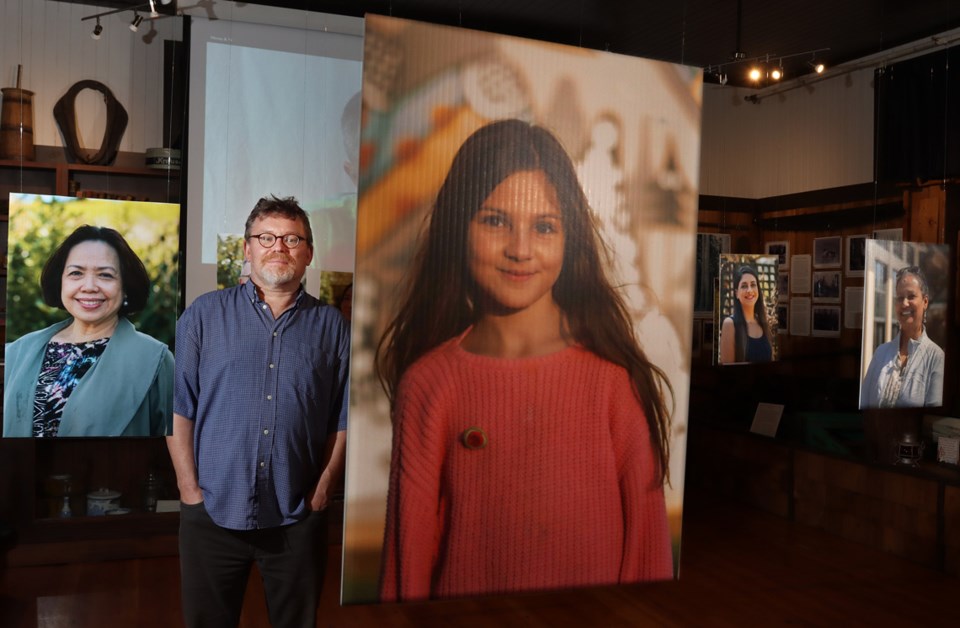Three years into her new life in Canada, Luana Magno still feels like she’s living in limbo.
The native of Rio de Janeiro says she’s no longer Brazilian, but she’s not yet Canadian either.
In an effort to soothe her sense of displacement and create a community around her immigrant experience, Magno reached out to other newcomers to Canada she’d met through the Tri-Cities Local Immigration Partnership’s diversity in leadership project.Magno reached out to other newcomers to Canada she’d met through the Tri-Cities Local Immigration Partnership’s diversity in leadership project.
She interviewed them on video and photographed them with her camera.
Magno’s Nice to Meet You project that presents those video clips and large, colourful portraits is now on display at Port Moody’s Station Museum through October.
Magno said the experience of talking to other immigrants about their journeys was cathartic.
“I met so many people who were struggling to adapt to life in Canada,” she said. “It’s like I can help myself be seen.”
Like many of the immigrants she interviewed, Magno and her husband, Carlos Haddad, came to Canada to seek a better life. Though she was a trained lawyer working as a manager in a large consulting firm, and Haddad was also a manager for an international company, she said life in Brazil was discouraging.
“We were not happy there,” Magno said. “We thought we were missing something like a work-life balance, not to be afraid to walk on the streets. We could not see a good future ahead.”
Previous visits to Toronto, Montreal and Ottawa told the couple the serenity they sought might be in Canada. But, Magno said, they feared the cold climate of those cities.
They looked to Vancouver. Like Rio, it’s nestled between mountains and ocean. It has a temperate climate, a connection to nature.
“It has some things we are used to,” Magno said.
As skilled workers, she said, their applications to immigrate to Canada were readily accepted. But leaving behind family, friends, good jobs and everything they’d known to board a flight into the unknown was as frightening as it was exciting.
“We went from everybody knows what we are doing to we are nobody,” Magno said. “It’s pretty hard, this transition.”
Speaking to other immigrants, from places like South Africa, Iran, India, Ukraine and Peru reassured Magno she wasn’t alone with her doubts and worries. More importantly, though, she said it gave her a sense of community.
“It brings us a sense of belonging to hear other people’s stories,” she said. “We all have some things in common.”
Markus Fahrner, a coordinator and curator at Station Museum, was one of the immigrants Magno interviewed and photographed. He said the process transported him back to his own insecurities when he first moved to Canada from Germany.
“You start literally at zero,” he said. “You look back and say yes, that was quite a slog.”
Fahrner said the museum, that’s located in an old CPR train station, is a fitting venue to display Magno’s project because so many immigrants to Canada boarded trains to their final destinations in their new country. It’s also a nice continuation of themes of immigration and its role in building Port Moody explored in previous efforts like “Unpacking My Suitcase” which featured suitcases packed with belongings, treasures and life stories of newcomers that were researched and curated by high school students.
Magno said the project has helped ease her sense of disorientation. Ironically, she added, it’s also given her a stronger appreciation for the life she left behind, like the warm, tropical light of Rio.
“I learned a lot about myself,” she said. “It helps me see the Brazilian within me.”



